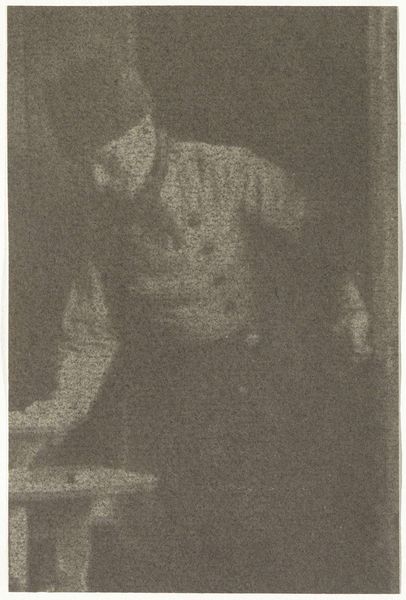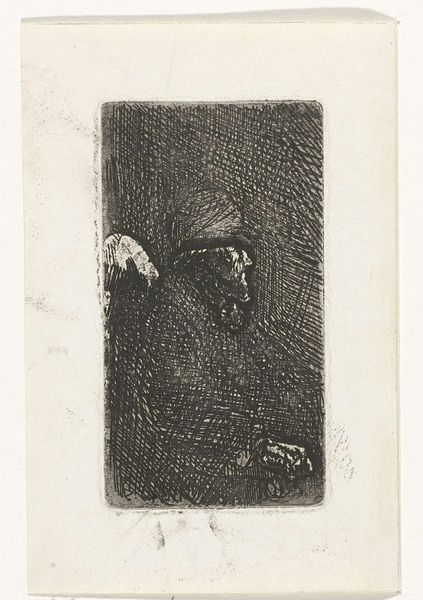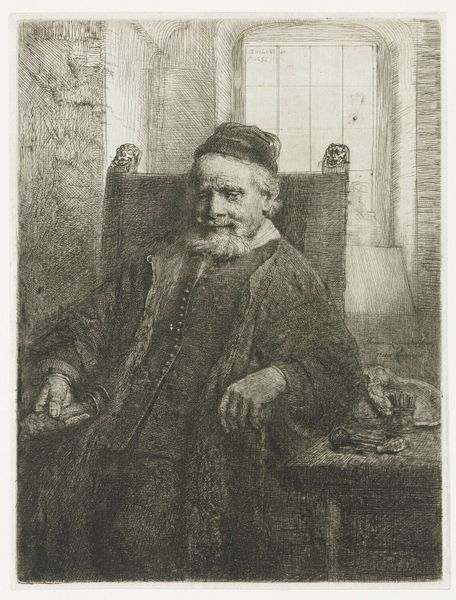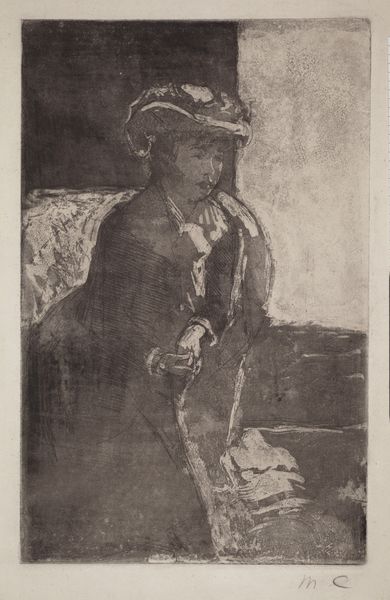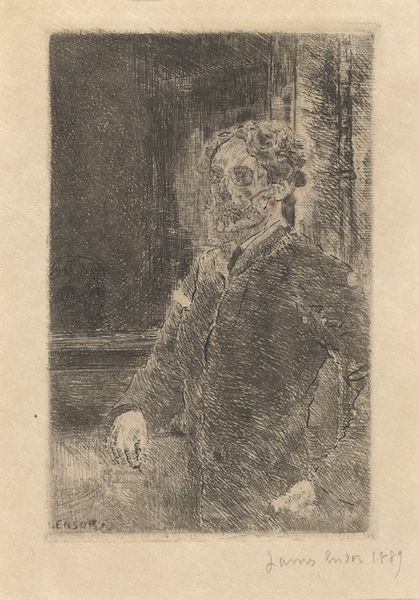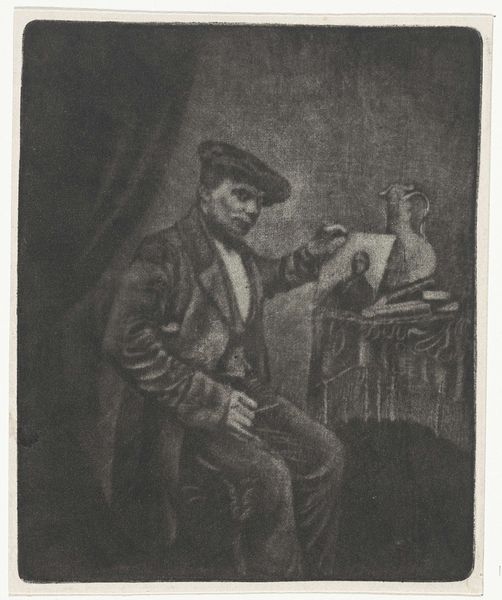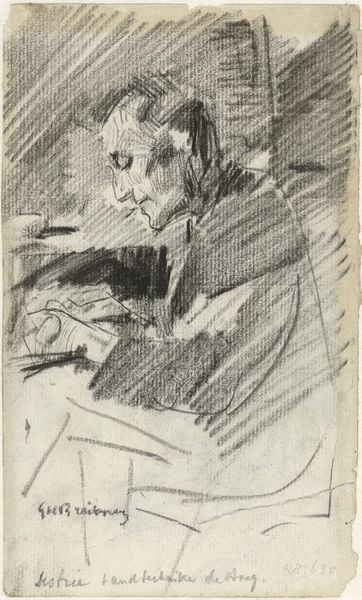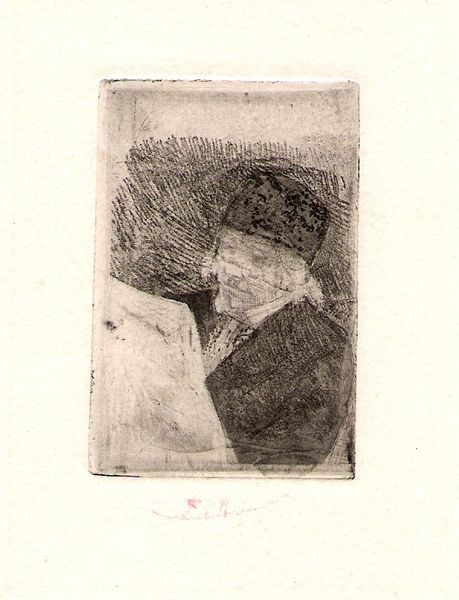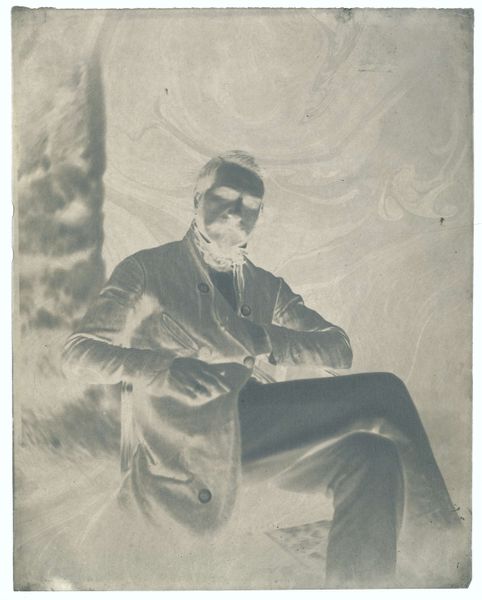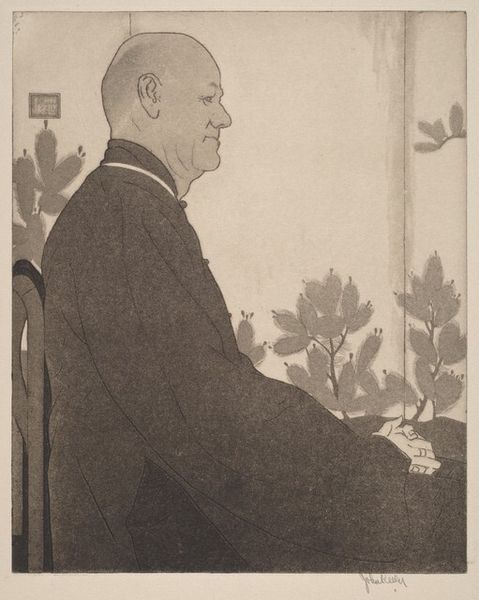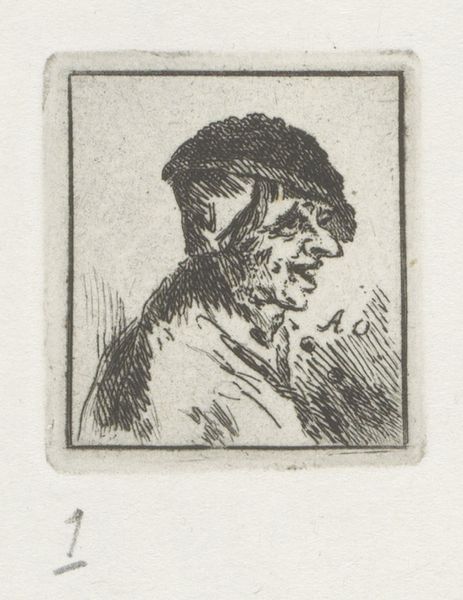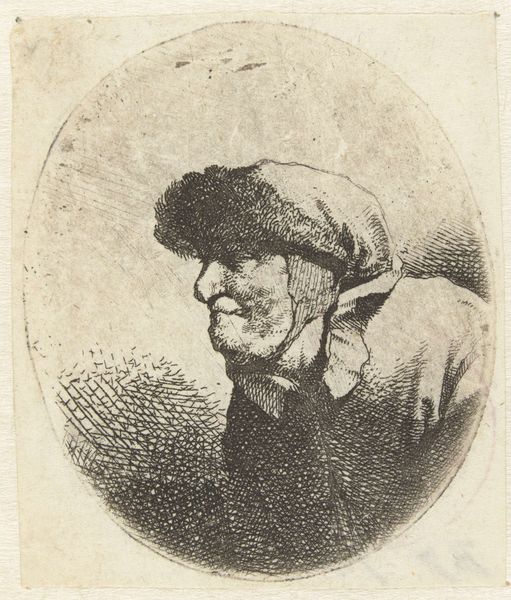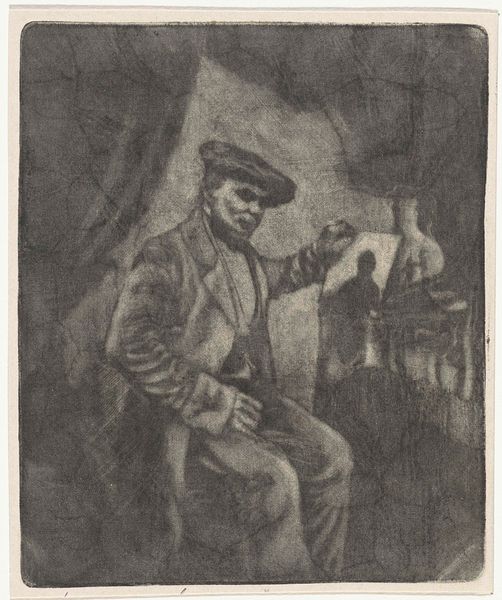
photography
#
portrait
#
charcoal drawing
#
photography
#
pencil drawing
#
realism
Dimensions: height 73 mm, width 95 mm
Copyright: Rijks Museum: Open Domain
Curator: Let's consider this photographic work titled "Portret van een oude man met een muts, vermoedelijk in Volendam," dating from approximately 1900 to 1910. It's a powerful, almost haunting image. Editor: My first impression is that the portrait possesses a certain gravity, a melancholy intensified by the limited tonal range. It is nearly monochromatic. The deep shadows lend a psychological depth; we don't merely see a man but sense his inner world. Curator: Absolutely. Observe how the artist manipulates light and shadow to direct our gaze. The sharp definition around the nose and brow contrasts sharply with the obscuring darkness around the hat. Editor: It is also a study in social representation. Volendam was a popular subject in that period, was it not? Curator: Indeed. The picturesque fishing village and its inhabitants offered artists a chance to engage with representations of traditional Dutch culture amidst the tides of modernisation. This portrait likely taps into a desire to document a disappearing way of life. Note the subtle details—the worn textures, deep lines of his face etched with time and labor, tell an interesting story of human toil, right? Editor: The high contrast amplifies that narrative, creating a sense of immediacy as though we are in the presence of this individual. I wonder, though, to what degree the artist imposed their romantic preconceptions on this anonymous sitter. Was it merely observation, or something else? Curator: Perhaps the artist also aims to highlight an authenticity deemed absent in the growing industrialized urban centres. These kinds of artworks offer a potent cultural narrative concerning value and worth in times of rapid change. Editor: Considering this work's potential reception amongst bourgeois city-dwellers offers another critical frame. They may experience it less as raw truth and more as a deliberately aestheticised rendering of social identity and labor. Curator: The beauty lies precisely in those interwoven levels of reception and engagement. What at first glance seems simple turns out to be rather a rich cultural document that allows for diverse perspectives. Editor: A powerful reminder to observe how form, history and cultural narratives coalesce within what otherwise appears simply a photographic portrait.
Comments
No comments
Be the first to comment and join the conversation on the ultimate creative platform.
